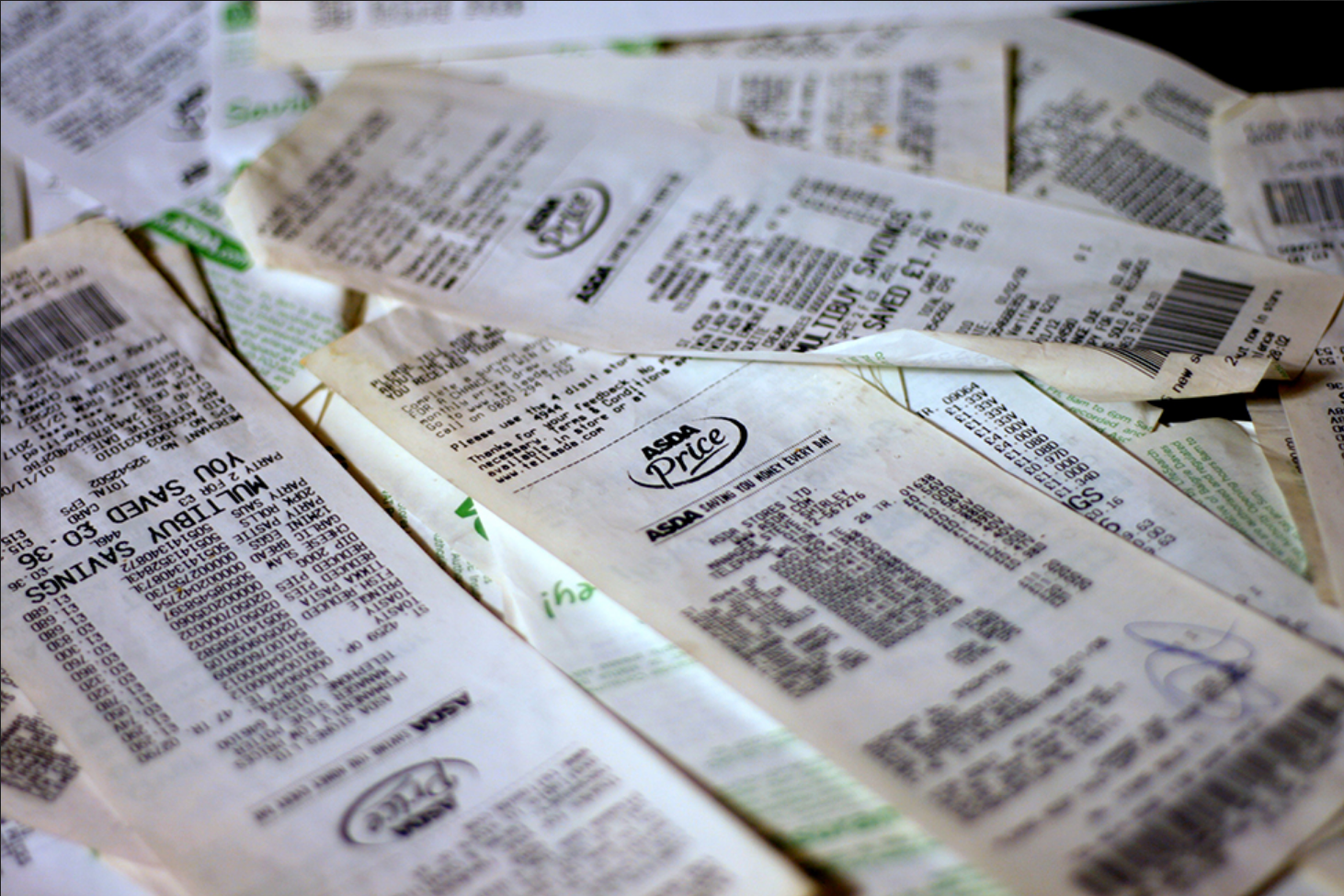Introductory Statistics
Topic outline
-
Welcome to Introductory Statistics [CMAT 1303]!
Course Introduction
This Introductory Statistics [CMAT 1303] course adheres to the scope and sequence of a one-semester Introductory Statistics course. The course description provided is the from the statewide common course information.Course Description: Descriptive statistics; probability; discrete and continuous (including the binomial, normal and T) distributions; sampling distributions; interval estimation; hypothesis testing; linear regression and correlation.Upon successful completion of this course, the student will be able to:
- Explain and apply principles of study design and data collection.
- Give examples of biased and random sampling techniques.
- Construct and interpret graphical summaries of data.
- Identify characteristics of graphs that are poor practice and may mislead an audience.
- Compute and interpret numerical summary statistics, including central tendency and variability.
- Construct and draw inferences from charts, tables, and graphs that summarize data from real-world graphically.
- Analyze study design to rate the reliability of an inference.
- Compute probabilities of events using probability and counting rules.
- Apply the concept of a random variable to generate and interpret probability distribution including binomial, uniform, normal, and chi-square.
- Use the Central Limit Theorem.
- Determine point estimates, confidence intervals, and appropriate sample size.
- Perform hypothesis testing and recommend whether the null should be rejected or not.
- Graphically and numerically describe the relationship between two quantitative variables, including correlation coefficients, coefficients of determination, and regression formulas.
Adopting instructors can embed a welcome video or add additional text here.
This course is set up in Modules covering various topics which may be accessed from the course navigation menu on the left or by scrolling below. Modules may be collapsed in the menu and it the body of the course to minimize scrolling. Many items are required and may be marked as completed automatically when the activity has been submitted (the broken check box), but others will marked as done by the student (the solid check box).Structure of the Course
The course includes 12 content Modules which covers each of the 11 chapters in the textbook (provided link). Each module includes a brief introduction text with module learning objectives, links to the corresponding Pressbook sections, homework assignments in MyOpenMath, a Chapter Review, additional Chapter Practice and Homework, a Quiz in MyOpenMath, a Chapter Project, and a Q&A discussion forum for that Module. There are additional modules for smaller Exams, a Midterm Exam, and/or Final Exam.
Navigating the Course
Please move through the items below and continue through the Learner Support and Getting Started modules before moving on to Module 1. Be sure to check for announcements and due dates to stay on track.Adopting instructors can embed a navigation video or add additional text here.
 This course and its contents, developed by author: Jared Eusea, and editors/reviewers: Phyllis Okwan, Rachid Belmasrour, Stephan Patterson, and Stephen Andrus, are licensed under a Creative Commons Attribution 4.0 International License by LOUIS: The Louisiana Library Network, except where otherwise noted.
This course and its contents, developed by author: Jared Eusea, and editors/reviewers: Phyllis Okwan, Rachid Belmasrour, Stephan Patterson, and Stephen Andrus, are licensed under a Creative Commons Attribution 4.0 International License by LOUIS: The Louisiana Library Network, except where otherwise noted. Adopting instructors should edit the About Your Instructor and Office Hours Information pages in this Module.
-
Adopting instructors should edit all pages in this Module - as per their own Institution's policies.
-
This module contains all the items you should review and complete before you begin Module 1. Before moving on, be sure to:
- Check the News and Announcements Forum
- Read the Course Syllabus
- Introduce yourself to the class
- Read the instructions for the Q & A Forum
Good luck in the course!-
Use this forum to tell us a little about yourself and your interests. Some topic ideas:
- What is your field of study/research interest or concentration?
- What are you most interested in learning about in this class and why?
- Have you ever taken an online class before?
- Any other information you would like to share with your classmates, such as special interests or activities.
Post a picture! We look forward to meeting you.
-
Use this forum to ask your instructor any questions you have about the course. You may post at any time, and your instructor will respond here. Be as specific as possible.
Please keep in mind that others can see your posts, so do not post any personal information. If you have questions about your grade, please email your instructor directly. You can expect a response to posts and emails within [X] hours. [Recommendation is 24 hours M-F, next business day on weekends.]
Subscription should be set to Auto.
- Check the News and Announcements Forum
-

You are probably asking yourself the question, "When and where will I use statistics?" If you read any newspaper, watch television, or use the Internet, you will see statistical information. There are statistics about crime, sports, education, politics, and real estate. Typically, when you read a newspaper article or watch a television news program, you are given sample information.
With this information, you may make a decision about the correctness of a statement, claim, or "fact." Statistical methods can help you make the "best educated guess."
Since you will undoubtedly be given statistical information at some point in your life, you need to know some techniques for analyzing the information thoughtfully. Think about buying a house or managing a budget. Think about your chosen profession. The fields of economics, business, psychology, education, biology, law, computer science, police science, and early childhood development require at least one course in statistics.
Included in this chapter are the basic ideas and words of probability and statistics. You will soon understand that statistics and probability work together. You will also learn how data are gathered and what "good" data can be distinguished from "bad."
Image Caption: We encounter statistics in our daily lives more often than we probably realize and from many different sources, like the news, the weather, the lab, and the classroom. (credit: David Sim)
(Content & Image Source: Chapter 1 Introduction, Introductory Statistics, Barbara Illowsky and Susan Dean, OpenStax, CC BY 4.0 License)
Upon completion of this module, you will be able to:Section 1.1- Recognize and differentiate between key terms.
Section 1.2- Classify data as qualitative or quantitative, continuous, discrete, or neither.
- Determine types of graphs appropriate for specific data.
- Apply various types of sampling methods to data collection.
Section 1.3- Determine the level of measurements for variables.
- Create and interpret frequency tables.
Section 1.4- Classify variables used for conducting an experiment.
- Identify the ethical concerns that arise when conducting a study.
To achieve these objectives:- Read the Module 1 Introduction (see above).
- Read Sections 1.1 - 1.4 of Chapter 1: Sampling and Data in Introductory Statistics (links to each Section provided below)
- Complete the MyOpenMath Homework Assignments for the topics in the Chapter (links provided below) - These are graded!
- View the Chapter 1 Review (link provided below)
- Practice the problems in the Chapter 1 Practice and Homework, checking the solutions provided (links to each provided below)
- Submit the Chapter 1 Project I: Data Collection Experiment or the Chapter 1 Project II: Sampling Experiment (links to project and submission link provided below)
- Complete the MyOpenMath Quiz for Chapter 1 (link provided below) - This is graded!
- Once you complete the Quiz, upload your work in the Quiz Work Upload Assignment using the submission link below.
- Post in the Chapter 1 Q&A Discussion Forum - link provided below.
Note the check boxes to the right that help you track your progress: some are automatic, and some are manual.
Module Pressbooks Resources and Activities
You will find the following resources and activities in this module at the Pressbooks website. Click on the links below to access or complete each item.
- Recognize and differentiate between key terms.
-

Once you have collected data, what will you do with it? Data can be described and presented in many different formats. For example, suppose you are interested in buying a house in a particular area. You may have no clue about the house prices, so you might ask your real estate agent to give you a sample data set of prices. Looking at all the prices in the sample often is overwhelming. A better way might be to look at the median price and the variation of prices. The median and variation are just two ways that you will learn to describe data. Your agent might also provide you with a graph of the data.
In this chapter, you will study numerical and graphical ways to describe and display your data. This area of statistics is called "Descriptive Statistics." You will learn how to calculate, and even more importantly, how to interpret these measurements and graphs.
A statistical graph is a tool that helps you learn about the shape or distribution of a sample or a population. A graph can be a more effective way of presenting data than a mass of numbers because we can see where data clusters and where there are only a few data values. Newspapers and the Internet use graphs to show trends and to enable readers to compare facts and figures quickly. Statisticians often graph data first to get a picture of the data. Then, more formal tools may be applied.
Some of the types of graphs that are used to summarize and organize data are the dot plot, the bar graph, the histogram, the stem-and-leaf plot, the frequency polygon (a type of broken line graph), the pie chart, and the box plot. In this chapter, we will briefly look at stem-and-leaf plots, line graphs, and bar graphs, as well as frequency polygons, and time series graphs. Our emphasis will be on histograms and box plots.
Image Caption: When you have large amounts of data, you will need to organize it in a way that makes sense. These ballots from an election are rolled together with similar ballots to keep them organized. (credit: William Greeson)
(Content & Image Source: Chapter 2 Introduction, Introductory Statistics, Barbara Illowsky and Susan Dean, OpenStax, CC BY 4.0 License)
Upon completion of this module, you will be able to:2.1 Stem-and-Leaf Graphs (Stemplots), Line Graphs, and Bar Graphs- Display data graphically and interpret data with stemplots.
- Construct other types of graphs and interpret information displayed in: line graphs and bar graphs.
2.2 Histograms, Frequency Polygons, and Time Series Graphs- Display data graphically and interpret data with histograms.
- Construct other types of graphs and interpret information displayed in: frequency polygons and time series graphs.
2.3 Measures of the Location of the Data- Recognize, describe, and calculate the measures of location of data: quartiles and percentiles.
- Compute the five-number summary.
2.4 Box Plots- Display data graphically and interpret box plots.
2.5 Measures of the Center of the Data- Recognize, describe, and calculate the measures of the center of data: mean, median, and mode.
- Compute the mean, median, and mode of grouped frequency.
2.6 Skewness and the Mean, Median, and Mode- Recognize basic distribution shapes.
2.7 Measures of the Spread of the Data- Recognize, describe, and calculate the measures of the spread of data: variance, standard deviation, and range.
- Use the mean and the standard deviation to calculate z-scores and the empirical rule.
To achieve these objectives:- Read the Module 2 Introduction (see above).
- Read Sections 2.1 - 2.7 of Chapter 2: Descriptive Statistics in Introductory Statistics (links to each Section provided below)
- Complete the MyOpenMath Homework Assignments for the topics in the Chapter (links provided below) - These are graded!
- View the Chapter 2 Review (link provided below)
- Practice the problems in the Chapter 2 Practice and Homework, checking the solutions provided (links to each provided below)
- Submit the Chapter 2 Project: Descriptive Statistics (links to project and submission link provided below)
- Complete the MyOpenMath Quiz for Chapter 2 (link provided below) - This is graded!
- Once you complete the Quiz, upload your work in the Quiz Work Upload Assignment using the submission link below.
- Post in the Chapter 2 Q&A Discussion Forum - link provided below.
Note the check boxes to the right that help you track your progress: some are automatic, and some are manual.Module Pressbooks Resources and Activities
You will find the following resources and activities in this module at the Pressbooks website. Click on the links below to access or complete each item.
-

It is often necessary to "guess" about the outcome of an event in order to make a decision. Politicians study polls to guess their likelihood of winning an election. Teachers choose a particular course of study based on what they think students can comprehend. Doctors choose the treatments needed for various diseases based on their assessment of likely results. You may have visited a casino where people play games chosen because of the belief that the likelihood of winning is good. You may have chosen your course of study based on the probable availability of jobs.
You have, more than likely, used probability. In fact, you probably have an intuitive sense of probability. Probability deals with the chance of an event occurring. Whenever you weigh the odds of whether or not to do your homework or to study for an exam, you are using probability. In this chapter, you will learn how to solve probability problems using a systematic approach.
Image Caption: Meteor showers are rare, but the probability of them occurring can be calculated. (credit: Navicore/flickr)
(Content & Image Source: Chapter 3 Introduction, Introductory Statistics, Barbara Illowsky and Susan Dean, OpenStax, CC BY 4.0 License)
Upon completion of this module, you will be able to:3.1 Terminology- Define and use common probability terms
- Compute probabilities for common experiments with equally likely outcomes
- Combine events and compute the resulting probabilities
- Compute conditional probabilities
3.2 Independent and Mutually Exclusive Events- Identify two events as mutually exclusive, or not
- Identify two events as independent, or not
- Use the relationships between events to compute probabilities
3.3 Two Basic Rules of Probability- state and apply the multiplication rule to any two events
- state and apply the multiplication rule for independent events
- state and apply the addition rule for any two events
- state and apply the addition rule for mutually exclusive events
3.4 Contingency Tables- Use a given contingency table to compute probabilities
- Complete a contingency table given starting information about a sample
3.5 Tree and Venn Diagrams- Use tree diagrams to find probabilities for experiments with and without replacement
- Use Venn diagrams to visualize relationships between events
To achieve these objectives:- Read the Module 3 Introduction (see above).
- Read Sections 3.1 - 3.5 of Chapter 3: Probability Topics in Introductory Statistics (links to each Section provided below)
- Complete the MyOpenMath Homework Assignments for the topics in the Chapter (links provided below) - These are graded!
- View the Chapter 3 Review (link provided below)
- Practice the problems in the Chapter 3 Practice and Homework, checking the solutions provided (links to each provided below)
- Submit the Chapter 3 Project: Probability Topics (links to project and submission link provided below)
- Complete the MyOpenMath Quiz for Chapter 3 (link provided below) - This is graded!
- Once you complete the Quiz, upload your work in the Quiz Work Upload Assignment using the submission link below.
- Post in the Chapter 3 Q&A Discussion Forum - link provided below.
Note the check boxes to the right that help you track your progress: some are automatic, and some are manual.Module Pressbooks Resources and Activities
You will find the following resources and activities in this module at the Pressbooks website. Click on the links below to access or complete each item.
-
 In this module you will take your Exam 1 .
In this module you will take your Exam 1 . Read the Exam 1 Information and Instructions page carefully and take note of any special submission guidelines.
Upon completion of this module, you will have:- Read and viewed the Exam 1 Information and Instructions page
- Scheduled your exam with the proctoring service [if applicable, delete if not needed]
- Post in the Exam 1 Q&A Discussion Forum - link provided below.
- Prepared for and submitted your Exam 1 [revise as needed]
- Uploaded your work in the Exam 1 Work Upload Assignment using the submission link below.
Attribution of image: ("Math, Numbers, Number image. Free for use." Pixabay.com. https://pixabay.com/photos/math-numbers-number-counting-5247958/)
Adopting instructors: Edit the Exam 1 Information and Instructions page.
-
 Let us begin with two different examples of the types of probability problems we'll be able to model using the techniques of this chapter.
Let us begin with two different examples of the types of probability problems we'll be able to model using the techniques of this chapter.Example 1: Suppose a student takes a ten-question, true-false quiz. Because the student had such a busy schedule, they could not study and guess randomly at each answer. What is the probability of the student passing the quiz with at least a 70%?
Example 2: Small companies might be interested in the number of unread emails sitting in their employee's mailboxes. If the average number of unread emails is 100 at the end of the workday, what is the probability that on a given day, the employees have more than 120 unread emails at the end of the workday?
Each of these probabilities can be found if we know the distribution of the corresponding discrete random variable. Recall that discrete data are data that you can count. A random variable describes the outcomes of a statistical experiment in words. The values of a random variable can vary with each repetition of an experiment.
Image Caption: You can use probability and discrete random variables to calculate the likelihood of lightning striking the ground five times during a half-hour thunderstorm. (Credit: Leszek Leszczynski)
(Content & Image Source: Chapter 4 Introduction, Introductory Statistics, Barbara Illowsky and Susan Dean, OpenStax, CC BY 4.0 License)
Upon completion of this module, you will be able to:4.1 Probability Distribution Function (PDF) for a Discrete Random Variable- Validate the properties of a discrete probability distribution function
- Write a probability distribution function for given discrete data
4.2 Measures of General Discrete Random Variables- Calculate and interpret expected values of general random variables
- Calculate and interpret the variance and standard deviation of general random variables
4.3 Binomial Distribution- Identify the components of a binomial experiment
- Use the formulas for a binomial random variable to compute mean, variance, and standard deviation
4.4 Geometric Distribution- Identify the components of a geometric experiment
- Use the formulas for a geometric random variable to compute mean, variance, and standard deviation
4.5 Hypergeometric Distribution- Identify the components of a hypergeometric experiment
- Use the formulas for a hypergeometric random variable to compute mean, variance, and standard deviation
4.6 Poisson Distribution- Identify the components of a Poisson experiment
- Use the formulas for a Poisson random variable to compute the mean, variance, and standard deviation
To achieve these objectives:- Read the Module 4 Introduction (see above).
- Read Sections 4.1 - 4.6 of Chapter 4: Discrete Random Variables in Introductory Statistics (links to each Section provided below)
- Complete the MyOpenMath Homework Assignments for the topics in the Chapter (links provided below) - These are graded!
- View the Chapter 4 Review (link provided below)
- Practice the problems in the Chapter 4 Practice and Homework, checking the solutions provided (links to each provided below)
- Submit the Chapter 4 Project I: Lucky Dice Experiment or the Chapter 4 Project II: Playing Card Experiment (links to project and submission link provided below)
- Complete the MyOpenMath Quiz for Chapter 4 (link provided below) - This is graded!
- Once you complete the Quiz, upload your work in the Quiz Work Upload Assignment using the submission link below.
- Post in the Chapter 4 Q&A Discussion Forum - link provided below.
Note the check boxes to the right that help you track your progress: some are automatic, and some are manual.Module Pressbooks Resources and Activities
You will find the following resources and activities in this module at the Pressbooks website. Click on the links below to access or complete each item.
-
 Continuous random variables have many applications. Baseball batting averages, IQ scores, the length of time a long distance telephone call lasts, the amount of money a person carries, the length of time a computer chip lasts, and SAT scores are just a few. The field of reliability depends on a variety of continuous random variables.
Continuous random variables have many applications. Baseball batting averages, IQ scores, the length of time a long distance telephone call lasts, the amount of money a person carries, the length of time a computer chip lasts, and SAT scores are just a few. The field of reliability depends on a variety of continuous random variables.Image Caption: The heights of these radish plants are continuous random variables. (Credit: Rev Stan)
(Content & Image Source: Chapter 5 Introduction, Introductory Statistics, Barbara Illowsky and Susan Dean, OpenStax, CC BY 4.0 License)
Upon completion of this module, you will be able to:5.1 Continuous Probability Functions- describe the properties of continuous probability distributions.
5.2 The Uniform Distribution- describe uniform probability distribution and apply it appropriately.
5.3 The Exponential Distribution- calculate exponential distribution and the probability density function.
To achieve these objectives:- Read the Module 5 Introduction (see above).
- Read Sections 5.1 - 5.3 of Chapter 5: Continuous Random Variables in Introductory Statistics (links to each Section provided below)
- Complete the MyOpenMath Homework Assignments for the topics in the Chapter (links provided below) - These are graded!
- View the Chapter 5 Review (link provided below)
- Practice the problems in the Chapter 5 Practice and Homework, checking the solutions provided (links to each provided below)
- Submit the Chapter 5 Project: Continuous Distribution (links to project and submission link provided below)
- Complete the MyOpenMath Quiz for Chapter 5 (link provided below) - This is graded!
- Once you complete the Quiz, upload your work in the Quiz Work Upload Assignment using the submission link below.
- Post in the Chapter 5 Q&A Discussion Forum - link provided below.
Note the check boxes to the right that help you track your progress: some are automatic, and some are manual.
Module Pressbooks Resources and Activities
You will find the following resources and activities in this module at the Pressbooks website. Click on the links below to access or complete each item.
-
 In this module you will take your Midterm Exam or Exam 2.
In this module you will take your Midterm Exam or Exam 2. Read the Midterm Exam or Exam 2 Information and Instructions page carefully and take note of any special submission guidelines.
Upon completion of this module, you will have:- Read and viewed the Midterm Exam or Exam 2 Information and Instructions page
- Scheduled your exam with the proctoring service [if applicable, delete if not needed]
- Post in the Midterm Exam or Exam 2 Q&A Discussion Forum - link provided below.
- Prepared for and submitted your Midterm Exam or Exam 2 [revise as needed]
- Uploaded your work in the Midterm Exam or Exam 2 Work Upload Assignment using the submission link below.
Attribution of image: ("Math, Numbers, Number image. Free for use." Pixabay.com. https://pixabay.com/photos/math-numbers-number-counting-5247958/)Adopting instructors: Edit the Midterm Exam or Exam 2 Information and Instructions page.
-
 The normal distribution, a continuous distribution, is the most important of all the distributions. It is widely used and even more widely abused. Its graph is bell-shaped. You see the bell curve in almost all disciplines. Some of these include psychology, business, economics, the sciences, nursing, and, of course, mathematics. Some of your instructors may use the normal distribution to help determine your grade. Most IQ scores are normally distributed. Often real-estate prices fit a normal distribution. The normal distribution is extremely important, but it cannot be applied to everything in the real world.
The normal distribution, a continuous distribution, is the most important of all the distributions. It is widely used and even more widely abused. Its graph is bell-shaped. You see the bell curve in almost all disciplines. Some of these include psychology, business, economics, the sciences, nursing, and, of course, mathematics. Some of your instructors may use the normal distribution to help determine your grade. Most IQ scores are normally distributed. Often real-estate prices fit a normal distribution. The normal distribution is extremely important, but it cannot be applied to everything in the real world.In this chapter, you will study the normal distribution, the standard normal distribution, and applications associated with them.
Image Caption: If you ask enough people about their shoe size, you will find that your graphed data is shaped like a bell curve and can be described as normally distributed. (credit: Ömer Ünlϋ)
(Content & Image Source: Chapter 6 Introduction, Introductory Statistics, Barbara Illowsky and Susan Dean, OpenStax, CC BY 4.0 License)
Upon completion of this module, you will be able to:6.1 The Standard Normal Distribution- Calculate and interpret z-scores.
- Recognize characteristics of the standard normal distribution.
- Apply the empirical rule to solve real-world applications.
6.2 Using the Normal Distribution- Find areas under the normal distribution curve.
- Use the inverse normal to identify values for a given area under the normal curve.
- Compute probabilities and percentiles for real-world applications using the normal distribution.
To achieve these objectives:- Read the Module 6 Introduction (see above).
- Read Sections 6.1 - 6.2 of Chapter 6: The Normal Distribution in Introductory Statistics (links to each Section provided below)
- Complete the MyOpenMath Homework Assignments for the topics in the Chapter (links provided below) - These are graded!
- Submit the Chapter 6 Project I: Lap Times or the Chapter 6 Project II: Pinkie Length (links to project and submission link provided below)
- Complete the MyOpenMath Quiz for Chapter 6 (Normal Distribution) (link provided below) - This is graded!
- Once you complete the Quiz, upload your work in the Quiz Work Upload Assignment using the submission link below.
- Post in the Chapter 6 Q&A Discussion Forum (Normal Distribution) - link provided below.
Note the check boxes to the right that help you track your progress: some are automatic, and some are manual.Module Pressbooks Resources and Activities
You will find the following resources and activities in this module at the Pressbooks website. Click on the links below to access or complete each item.
-
 Why are we so concerned with means? Two reasons are: they give us a middle ground for comparison, and they are easy to calculate. In this chapter, you will study means and the central limit theorem.
Why are we so concerned with means? Two reasons are: they give us a middle ground for comparison, and they are easy to calculate. In this chapter, you will study means and the central limit theorem.The central limit theorem (clt for short) is one of the most powerful and useful ideas in all of statistics. There are two alternative forms of the theorem, and both alternatives are concerned with drawing finite samples size n from a population with a known mean, μ, and a known standard deviation, σ.
The first alternative says that if we collect samples of size n with a "large enough n," calculate each sample's mean, and create a histogram of those means, then the resulting histogram will tend to have an approximate normal bell shape. The second alternative says that if we again collect samples of size n that are "large enough," calculate the sum of each sample and create a histogram, then the resulting histogram will again tend to have a normal bell-shape.
In either case, it does not matter what the distribution of the original population is, or whether you even need to know it. The important fact is that the distribution of sample means and the sums tend to follow the normal distribution.
The size of the sample, n, that is required in order to be "large enough" depends on the original population from which the samples are drawn (the sample size should be at least 30 or the data should come from a normal distribution). If the original population is far from normal, then more observations are needed for the sample means or sums to be normal. Sampling is done with replacement. Given simple random samples of size n from a given population with a measured characteristic such as mean, proportion, or standard deviation for each sample, the probability distribution of all the measured characteristics is called a sampling distribution.
It would be difficult to overstate the importance of the central limit theorem in statistical theory. Knowing that data, even if its distribution is not normal, behaves in a predictable way is a powerful tool.
Image Caption: If you want to figure out the distribution of the change people carry in their pockets, using the central limit theorem and assuming your sample is large enough, you will find that the distribution is normal and bell-shaped. (credit: John Lodder)
(Content & Image Source: Chapter 7 Introduction, Introductory Statistics, Barbara Illowsky and Susan Dean, OpenStax, CC BY 4.0 License)
Upon completion of this module, you will be able to:6.3 The Central Limit Theorem for Sample Means (Averages)- Recognize characteristics of the Central Limit Theorem for the Sample Means
- Apply and interpret the the Central Limit Theorem for the Sample Means and use to solve real-world applications.
6.4 The Central Limit Theorem for Sums- Recognize characteristics of the Central Limit Theorem for the Sums
- Apply and interpret the the Central Limit Theorem for the Sums and use to solve real-world applications.
6.5 The Normal Approximation to the Binomial- Approximate the binomial distribution using the normal distribution
To achieve these objectives:- Read the Module 7 Introduction (see above).
- Read Sections 6.3 - 6.4 of Chapter 6: The Central Limit Theorem in Introductory Statistics (links to each Section provided below)
- Complete the MyOpenMath Homework Assignments for the topics in the Chapter (links provided below) - These are graded!
- View the Chapter 6 Review (link provided below)
- Practice the problems in the Chapter 6 Practice and Homework, checking the solutions provided (links to each provided below)
- Submit the Chapter 6 Project III: Pocket Change or the Chapter 6 Project IV: Cookie Recipes (links to project and submission link provided below)
- Complete the MyOpenMath Quiz for Chapter 6 (CLT) (link provided below) - This is graded!
- Once you complete the Quiz, upload your work in the Quiz Work Upload Assignment using the submission link below.
- Post in the Chapter 6 Q&A Discussion Forum (CLT) - link provided below.
Note the check boxes to the right that help you track your progress: some are automatic, and some are manual.Module Pressbooks Resources and Activities
You will find the following resources and activities in this module at the Pressbooks website. Click on the links below to access or complete each item.
-
 Suppose you were trying to determine the mean rent of a two-bedroom apartment in your town. You might look in the classified section of the newspaper, write down several rents listed, and average them together. You would have obtained a point estimate of the true mean. If you are trying to determine the percentage of times you make a basket when shooting a basketball, you might count the number of shots you make and divide that by the number of shots you attempted. In this case, you would have obtained a point estimate for the true proportion. We use sample data to make generalizations about an unknown population. This part of statistics is called inferential statistics. The sample data help us to make an estimate of a population parameter. We realize that the point estimate is most likely not the exact value of the population parameter, but close to it. After calculating point estimates, we construct interval estimates, called confidence intervals.
Suppose you were trying to determine the mean rent of a two-bedroom apartment in your town. You might look in the classified section of the newspaper, write down several rents listed, and average them together. You would have obtained a point estimate of the true mean. If you are trying to determine the percentage of times you make a basket when shooting a basketball, you might count the number of shots you make and divide that by the number of shots you attempted. In this case, you would have obtained a point estimate for the true proportion. We use sample data to make generalizations about an unknown population. This part of statistics is called inferential statistics. The sample data help us to make an estimate of a population parameter. We realize that the point estimate is most likely not the exact value of the population parameter, but close to it. After calculating point estimates, we construct interval estimates, called confidence intervals.In this chapter, you will learn to construct and interpret confidence intervals. You will also learn a new distribution, the Student's-t, and how it is used with these intervals. Throughout the chapter, it is important to keep in mind that the confidence interval is a random variable. It is the population parameter that is fixed.
If you worked in the marketing department of an entertainment company, you might be interested in the mean number of songs a consumer downloads a month from iTunes. If so, you could conduct a survey and calculate the sample mean, \( \overline{x} \) , and the sample standard deviation, s. You would use \( \overline{x} \) to estimate the population mean and s to estimate the population standard deviation. The sample mean, \( \overline{x} \), is the point estimate for the population mean, μ. The sample standard deviation, s, is the point estimate for the population standard deviation, σ. Each of \( \overline{x} \) and s is called a statistic.
A confidence interval is another type of estimate but, instead of being just one number, it is an interval of numbers. The interval of numbers is a range of values calculated from a given set of sample data. The confidence interval is likely to include an unknown population parameter. Suppose for the iTunes example, we do not know the population mean μ, but we do know that the population standard deviation is σ = 1 and our sample size is 100. Then, by the central limit theorem, the standard deviation for the sample mean is \( \frac{ \sigma}{\sqrt{n}}=\frac{ 1}{\sqrt{100}}=0.1 \). The empirical rule, which applies to bell-shaped distributions, says that in approximately 95% of the samples, the sample mean, \( \overline{x} \), will be within two standard deviations of the population mean μ. For our iTunes example, two standard deviations is (2)(0.1) = 0.2. The sample mean \( \overline{x} \) is likely to be within 0.2 units of μ. Because \( \overline{x} \) is within 0.2 units of μ, which is unknown, then μ is likely to be within 0.2 units of \( \overline{x} \) in 95% of the samples. The population mean μ is contained in an interval whose lower number is calculated by taking the sample mean and subtracting two standard deviations (2)(0.1) and whose upper number is calculated by taking the sample mean and adding two standard deviations. In other words, μ is between \( \overline{x} - 0.2 \) and \( \overline{x} + 0.2 \) in 95% of all the samples.
For the iTunes example, suppose that a sample produced a sample mean \( \overline{x} \) = \( 2 \). Then the unknown population mean μ is between \( \overline{x} - 0.2 = 2 - 0.2 = 1.8\) and \( \overline{x} + 0.2 = 2 + 0.2 = 2.2\). We say that we are 95% confident that the unknown population mean number of songs downloaded from iTunes per month is between 1.8 and 2.2. The 95% confidence interval is (1.8, 2.2). The 95% confidence interval implies two possibilities. Either the interval (1.8, 2.2) contains the true mean μ or our sample produced an \( \overline{x} \) that is not within 0.2 units of the true mean μ. The second possibility happens for only 5% of all the samples (95–100%).
Remember that a confidence interval is created for an unknown population parameter like the population mean, μ. Confidence intervals for some parameters have the form: (point estimate – margin of error, point estimate + margin of error). The margin of error depends on the confidence level or percentage of confidence and the standard error of the mean. When you read newspapers and journals, some reports will use the phrase "margin of error." Other reports will not use that phrase but include a confidence interval as the point estimate plus or minus the margin of error. These are two ways of expressing the same concept.
Image Caption: Have you ever wondered what the average number of M&Ms in a bag at the grocery store is? You can use confidence intervals to answer this question. (credit: comedy_nose/flickr)
(Content & Image Source: Chapter 8 Introduction, Introductory Statistics, Barbara Illowsky and Susan Dean, OpenStax, CC BY 4.0 License)
Upon completion of this module, you will be able to:7.1 A Single Population Mean using the Normal Distribution- Calculate the confidence interval
- Calculate the error bound (EBM)
- Determine the confidence level and sample size
7.2 A Single Population Mean using the Student t Distribution- Calculate Student's t-probabilities.
- Calculate the confidence interval
7.3 A Population Proportion- Calculate the error bound for a proportion.
- Calculate the confidence interval of p.
- Calculate the sample size n.
To achieve these objectives:- Read the Module 8 Introduction (see above).
- Read Sections 7.1 - 7.3 of Chapter 7: Confidence Intervals in Introductory Statistics (links to each Section provided below)
- Complete the MyOpenMath Homework Assignments for the topics in the Chapter (links provided below) - These are graded!
- View the Chapter 7 Review (link provided below)
- Practice the problems in the Chapter 7 Practice and Homework, checking the solutions provided (links to each provided below)
- Submit the Chapter 7 Project I: Home Costs, Chapter 7 Project II: Place of Birth, or Chapter 7 Project III: Women's Heights (links to project and submission link provided below)
- Complete the MyOpenMath Quiz for Chapter 7 (link provided below) - This is graded!
- Once you complete the Quiz, upload your work in the Quiz Work Upload Assignment using the submission link below.
- Post in the Chapter 7 Q&A Discussion Forum - link provided below.
Note the check boxes to the right that help you track your progress: some are automatic, and some are manual
Module Pressbooks Resources and Activities
You will find the following resources and activities in this module at the Pressbooks website. Click on the links below to access or complete each item.
-
 In this module you will take your Exam 2 or Exam 3. [revise as needed]
In this module you will take your Exam 2 or Exam 3. [revise as needed]Read the Exam 2 or Exam 3 Information and Instructions page carefully and take note of any special submission guidelines.
Upon completion of this module, you will have:- Read and viewed the Exam 2 or Exam 3 Information and Instructions page
- Scheduled your exam with the proctoring service [if applicable, delete if not needed]
- Post in the Exam 2 or Exam 3 Q&A Discussion Forum - link provided below.
- Prepared for and submitted your Exam 2 or Exam 3 [revise as needed]
- Uploaded your work in the Exam 2 or Exam 3 Work Upload Assignment using the submission link below.
Attribution of image: ("Math, Numbers, Number image. Free for use." Pixabay.com. https://pixabay.com/photos/math-numbers-number-counting-5247958/)
Adopting instructors: Edit the Exam 2 or Exam 3 Information and Instructions page.
-
 One job of a statistician is to make statistical inferences about populations based on samples taken from the population. Confidence intervals are one way to estimate a population parameter. Another way to make a statistical inference is to make a decision about a parameter. For instance, a car dealer advertises that its new small truck gets 35 miles per gallon, on average. A tutoring service claims that its method of tutoring helps 90% of its students get an A or a B. A company says that women managers in their company earn an average of $60,000 per year.
One job of a statistician is to make statistical inferences about populations based on samples taken from the population. Confidence intervals are one way to estimate a population parameter. Another way to make a statistical inference is to make a decision about a parameter. For instance, a car dealer advertises that its new small truck gets 35 miles per gallon, on average. A tutoring service claims that its method of tutoring helps 90% of its students get an A or a B. A company says that women managers in their company earn an average of $60,000 per year.A statistician will make a decision about these claims. This process is called "hypothesis testing." A hypothesis test involves collecting data from a sample and evaluating the data. Then, the statistician makes a decision as to whether or not there is sufficient evidence, based upon analyses of the data, to reject the null hypothesis.
In this chapter, you will conduct hypothesis tests on single means and single proportions. You will also learn about the errors associated with these tests.
Hypothesis testing consists of two contradictory hypotheses or statements, a decision based on the data, and a conclusion. To perform a hypothesis test, a statistician will:
- Set up two contradictory hypotheses.
- Collect sample data (in homework problems, the data or summary statistics will be given to you).
- Determine the correct distribution to perform the hypothesis test.
- Analyze sample data by performing the calculations that ultimately will allow you to reject or decline to reject the null hypothesis.
- Make a decision and write a meaningful conclusion.
Image Caption: You can use a hypothesis test to decide if a dog breeder’s claim that every Dalmatian has 35 spots is statistically sound. (Credit: Robert Neff)(Content & Image Source: Chapter 9 Introduction, Introductory Statistics, Barbara Illowsky and Susan Dean, OpenStax, CC BY 4.0 License)
Upon completion of this module, you will be able to:8.1 Null and Alternative Hypotheses- Describe hypothesis testing in general and in practice.
8.2 Outcomes and the Type I and Type II Errors- Differentiate between Type I and Type II errors in a hypothesis test.
8.3 Distribution Needed for Hypothesis Testing- Identify the distribution required to conduct a hypothesis test.
8.4 Rare Events, the Sample, Decision and Conclusion- Identify rare events
- Conduct and interpret hypothesis tests.
- Describe a decision and conclusion.
8.5 Additional Information and Full Hypothesis Test Examples- Conduct and interpret hypothesis tests for a single population mean, population standard deviation known.
- Conduct and interpret hypothesis tests for a single population mean, population standard deviation unknown.
- Conduct and interpret hypothesis tests for a single population proportion.
To achieve these objectives:- Read the Module 9 Introduction (see above).
- Read Sections 8.1 - 8.5 of Chapter 8: Hypothesis Testing with One Sample in Introductory Statistics (links to each Section provided below)
- Complete the MyOpenMath Homework Assignments for the topics in the Chapter (links provided below) - These are graded!
- View the Chapter 8 Review (link provided below)
- Practice the problems in the Chapter 8 Practice and Homework, checking the solutions provided (links to each provided below)
- Submit the Chapter 8 Project: Hypothesis Testing of a Single Mean and Single Proportion (links to project and submission link provided below)
- Complete the MyOpenMath Quiz for Chapter 8 (link provided below) - This is graded!
- Once you complete the Quiz, upload your work in the Quiz Work Upload Assignment using the submission link below.
- Post in the Chapter 8 Q&A Discussion Forum - link provided below.
Note the check boxes to the right that help you track your progress: some are automatic, and some are manual.
Module Pressbooks Resources and Activities
You will find the following resources and activities in this module at the Pressbooks website. Click on the links below to access or complete each item.
-
 Studies often compare two groups. For example, researchers are interested in the effect aspirin has in preventing heart attacks. Over the last few years, newspapers and magazines have reported various aspirin studies involving two groups. Typically, one group is given aspirin and the other group is given a placebo. Then, the heart attack rate is studied over several years.
Studies often compare two groups. For example, researchers are interested in the effect aspirin has in preventing heart attacks. Over the last few years, newspapers and magazines have reported various aspirin studies involving two groups. Typically, one group is given aspirin and the other group is given a placebo. Then, the heart attack rate is studied over several years.There are other situations that deal with the comparison of two groups. For example, studies compare various diet and exercise programs. Politicians compare the proportion of individuals from different income brackets who might vote for them. Students are interested in whether SAT or GRE preparatory courses really help raise their scores.
You have learned to conduct hypothesis tests on single means and single proportions. You will expand upon that in this chapter. You will compare two means or two proportions to each other. The general procedure is still the same, just expanded. To compare two means or two proportions, you work with two groups. The groups are classified either as independent or matched pairs.
Independent groups consist of two samples that are independent, that is, sample values selected from one population are not related in any way to sample values selected from the other population. Matched pairs consist of two samples that are dependent. The parameter tested using matched pairs is the population mean. The parameters tested using independent groups are either population means or population proportions.
This chapter deals with the following hypothesis tests:
Independent groups (samples are independent)- Test of two population means.
- Test of two population proportions.
Matched or paired samples (samples are dependent)- Test of the two population proportions by testing one population mean of differences.
Image Caption: If you want to test a claim that involves two groups (the types of breakfasts eaten east and west of the Mississippi River) you can use a slightly different technique when conducting a hypothesis test. (credit: Chloe Lim)(Content & Image Source: Chapter 10 Introduction, Introductory Statistics, Barbara Illowsky and Susan Dean, OpenStax, CC BY 4.0 License)
Upon completion of this module, you will be able to:9.1 Two Population Means with Unknown Standard Deviations- Conduct and interpret hypothesis tests for two population means, population standard deviations unknown.
9.2 Two Population Means with Known Standard Deviations- Conduct and interpret hypothesis tests for two population means, population standard deviations known.
9.3 Comparing Two Independent Population Proportions- Conduct and interpret hypothesis tests for two population proportions
9.4 Matched or Paired Samples- Conduct and interpret hypothesis tests for matched or paired samples.
To achieve these objectives:- Read the Module 10 Introduction (see above).
- Read Sections 9.1 - 9.4 of Chapter 9: Hypothesis Testing with Two Samples in Introductory Statistics (links to each Section provided below)
- Complete the MyOpenMath Homework Assignments for the topics in the Chapter (links provided below) - These are graded!
- View the Chapter 9 Review (link provided below)
- Practice the problems in the Chapter 9 Practice and Homework, checking the solutions provided (links to each provided below)
- Submit the Chapter 9 Project: Hypothesis Testing for Two Means and Two Proportions (links to project and submission link provided below)
- Complete the MyOpenMath Quiz for Chapter 9 (link provided below) - This is graded!
- Once you complete the Quiz, upload your work in the Quiz Work Upload Assignment using the submission link below.
- Post in the Chapter 9 Q&A Discussion Forum - link provided below.
Note the check boxes to the right that help you track your progress: some are automatic, and some are manual.Module Pressbooks Resources and Activities
You will find the following resources and activities in this module at the Pressbooks website. Click on the links below to access or complete each item.
-
 Professionals often want to know how two or more numeric variables are related. For example, is there a relationship between the grade on the second math exam a student takes and the grade on the final exam? If there is a relationship, what is the relationship and how strong is it?
Professionals often want to know how two or more numeric variables are related. For example, is there a relationship between the grade on the second math exam a student takes and the grade on the final exam? If there is a relationship, what is the relationship and how strong is it?In another example, your income may be determined by your education, your profession, your years of experience, and your ability. The amount you pay a repair person for labor is often determined by an initial amount plus an hourly fee.
The type of data described in the examples is bivariate data — "bi" for two variables. In reality, statisticians use multivariate data, meaning many variables.
In this chapter, you will be studying the simplest form of regression, "linear regression" with one independent variable (x). This involves data that fits a line in two dimensions. You will also study correlation which measures how strong the relationship is.
Image Caption: Linear regression and correlation can help you determine if an auto mechanic’s salary is related to his work experience. (credit: Joshua Rothhaas)
(Content & Image Source: Chapter 12 Introduction, Introductory Statistics, Barbara Illowsky and Susan Dean, OpenStax, CC BY 4.0 License)
Upon completion of this module, you will be able to:10.1 Linear Equations- Interpret the independent and dependent variable
- Calculate and interpret the slope and y intercept of a linear equation
10.2 Scatter Plots- Construct and interpret scatter plots.
10.3 The Regression Equation- Create and interpret the line of best fit.
- Calculate and interpret the correlation coefficient.
- Calculate and interpret the coefficient of determination.
10.4 Testing the Significance of the Correlation Coefficient- Test the significance of the correlation coefficient.
10.5 Prediction- Use the line of best fit for prediction.
10.6 Outliers- Find and interpret outliers between two quantitative variables.
To achieve these objectives:- Read the Module 11 Introduction (see above).
- Read Sections 10.1 - 10.6 of Chapter 10: Linear Regression and Correlation in Introductory Statistics (links to each Section provided below)
- Complete the MyOpenMath Homework Assignments for the topics in the Chapter (links provided below) - These are graded!
- View the Chapter 10 Review (link provided below)
- Practice the problems in the Chapter 10 Practice and Homework, checking the solutions provided (links to each provided below)
- Submit the Chapter 10 Project I: Distance from School, Chapter 10 Project II: Textbook Cost, or Chapter 10 Project III: Fuel Efficiency (links to project and submission link provided below)
- Complete the MyOpenMath Quiz for Chapter 10 (link provided below) - This is graded!
- Once you complete the Quiz, upload your work in the Quiz Work Upload Assignment using the submission link below.
- Post in the Chapter 10 Q&A Discussion Forum - link provided below.
Note the check boxes to the right that help you track your progress: some are automatic, and some are manual.Module Pressbooks Resources and Activities
You will find the following resources and activities in this module at the Pressbooks website. Click on the links below to access or complete each item.
-
 Have you ever wondered if lottery numbers were evenly distributed or if some numbers occurred with a greater frequency? How about if the types of movies people preferred were different across different age groups? What about if a coffee machine was dispensing approximately the same amount of coffee each time? You could answer these questions by conducting a hypothesis test.
Have you ever wondered if lottery numbers were evenly distributed or if some numbers occurred with a greater frequency? How about if the types of movies people preferred were different across different age groups? What about if a coffee machine was dispensing approximately the same amount of coffee each time? You could answer these questions by conducting a hypothesis test.You will now study a new distribution, one that is used to determine the answers to such questions. This distribution is called the chi-square distribution.
In this chapter, you will learn the three major applications of the chi-square distribution:
- the goodness-of-fit test, which determines if data fit a particular distribution, such as in the lottery example
- the test of independence, which determines if events are independent, such as in the movie example
- the test of a single variance, which tests variability, such as in the coffee example
Image Caption: The chi-square distribution can be used to find relationships between two things, like grocery prices at different stores. (credit: Pete/flickr)(Content & Image Source: Chapter 11 Introduction, Introductory Statistics, Barbara Illowsky and Susan Dean, OpenStax, CC BY 4.0 License)
Upon completion of this module, you will be able to:11.1 Facts About the Chi-Square Distribution- define Chi-Square Distribution, and apply the concept to problem solving
11.2 Goodness-of-Fit Test- calculate and interpret the Chi-Square Goodness-of-Fit test
11.3 Test of Independence- calculate the test of independence and determines whether two factors are independent or not
11.4 Test for Homogeneity- calculate the test statistic for a test for homogeneity
- test for homogeneity, and draw a conclusion about whether two populations have the same distribution
11.5 Comparison of the Chi-Square Tests- make comparison of the Chi-Square Tests
11.6 Test of a Single Variance- calculate the test of a single variance
To achieve these objectives:- Read the Module 12 Introduction (see above).
- Read Sections 11.1 - 11.6 of Chapter 11: The Chi-Square Distribution in Introductory Statistics (links to each Section provided below)
- Complete the MyOpenMath Homework Assignments for the topics in the Chapter (links provided below) - These are graded!
- View the Chapter 11 Review (link provided below)
- Practice the problems in the Chapter 11 Homework, checking the solutions provided (links to each provided below)
- Submit the Chapter 11 Project I: Chi-Square Goodness-of-Fit or the Chapter 11 Project II: Chi-Square Test of Independence (links to project and submission link provided below)
- Complete the MyOpenMath Quiz for Chapter 11 (link provided below) - This is graded!
- Once you complete the Quiz, upload your work in the Quiz Work Upload Assignment using the submission link below.
- Post in the Chapter 11 Q&A Discussion Forum - link provided below.
Note the check boxes to the right that help you track your progress: some are automatic, and some are manual.
Module Pressbooks Resources and Activities
You will find the following resources and activities in this module at the Pressbooks website. Click on the links below to access or complete each item.
-
 In this module you will take your Final Exam.
In this module you will take your Final Exam. Read the Final Exam Information and Instructions page carefully and take note of any special submission guidelines.
Upon completion of this module, you will have:- Read and viewed the Final Exam Information and Instructions page
- Scheduled your exam with the proctoring service [if applicable, delete if not needed]
- Post in the Final Exam Q&A Discussion Forum - link provided below.
- Prepared for and submitted your Final Exam [revise as needed]
- Uploaded your work in the Final Exam Work Upload Assignment using the submission link below.
Attribution of image: ("Math, Numbers, Number image. Free for use." Pixabay.com. https://pixabay.com/photos/math-numbers-number-counting-5247958/)
Adopting instructors: Edit the Final Exam Information and Instructions page.
